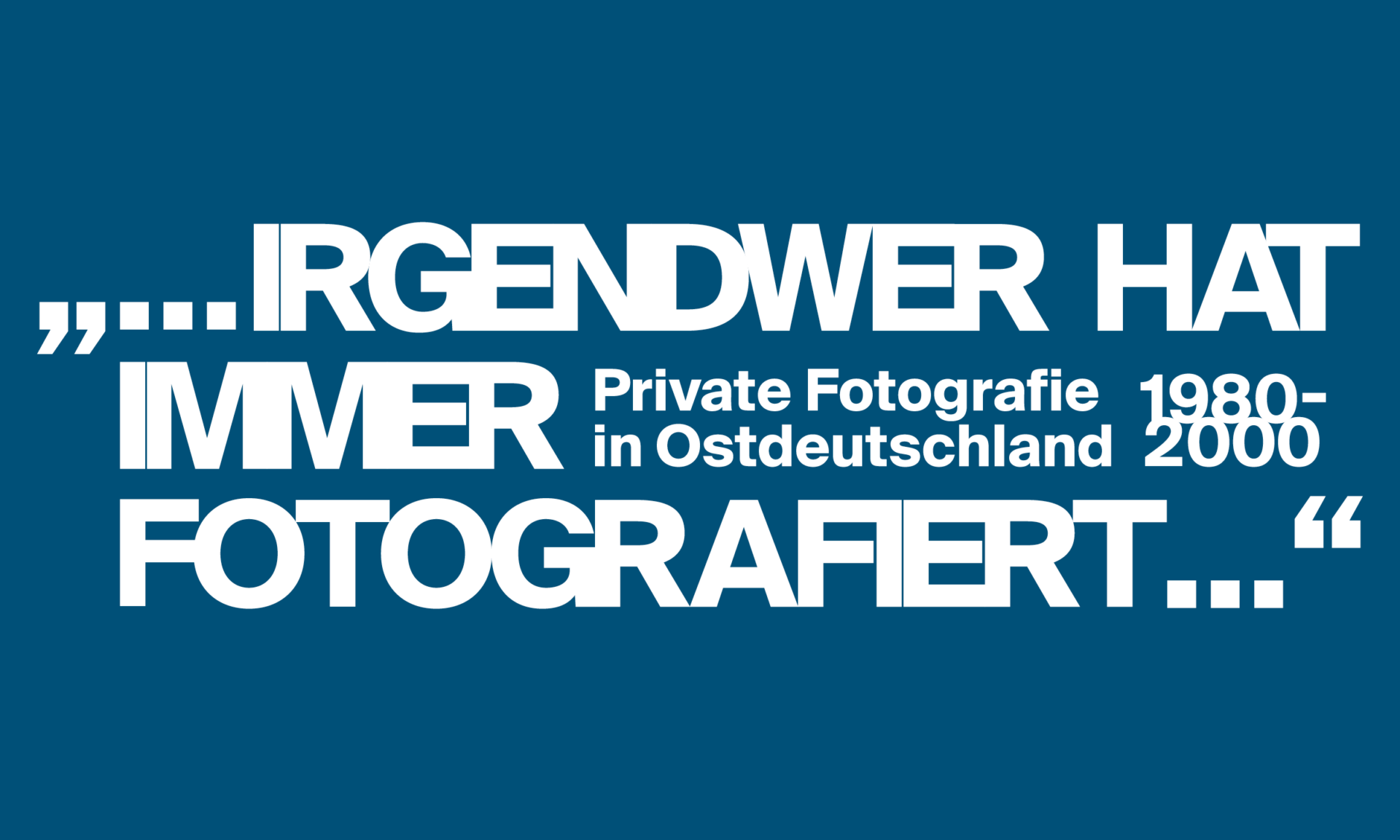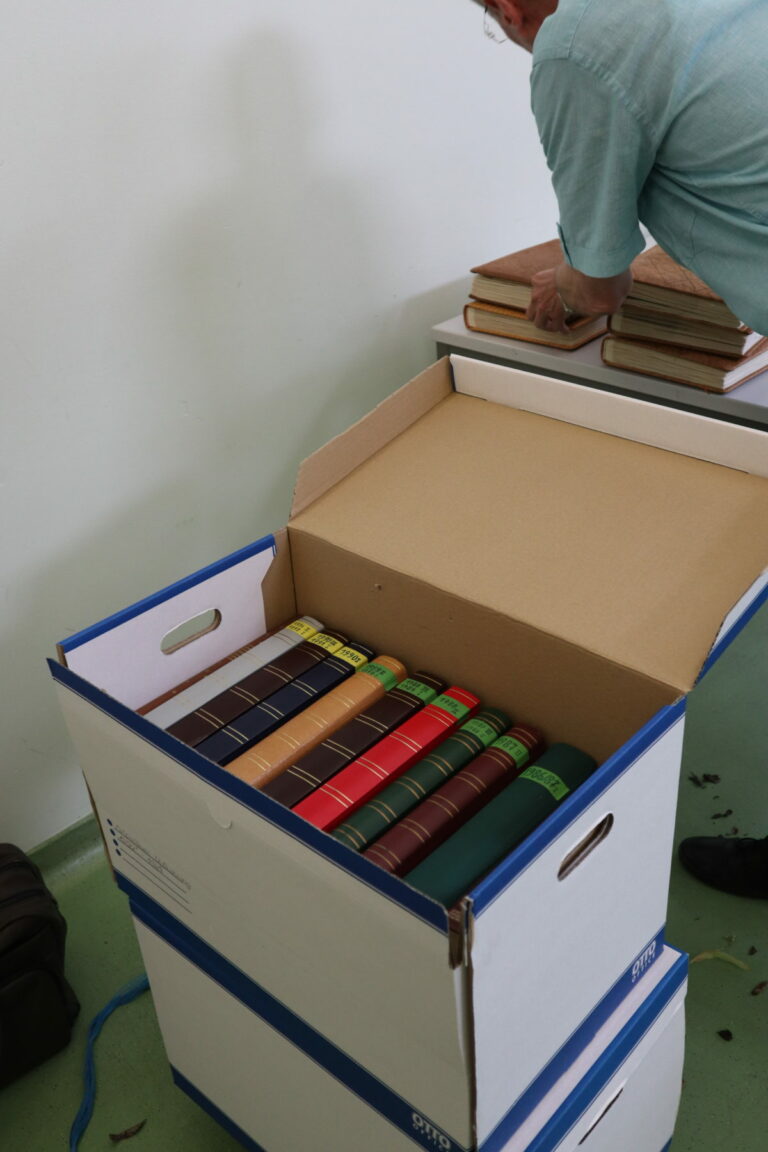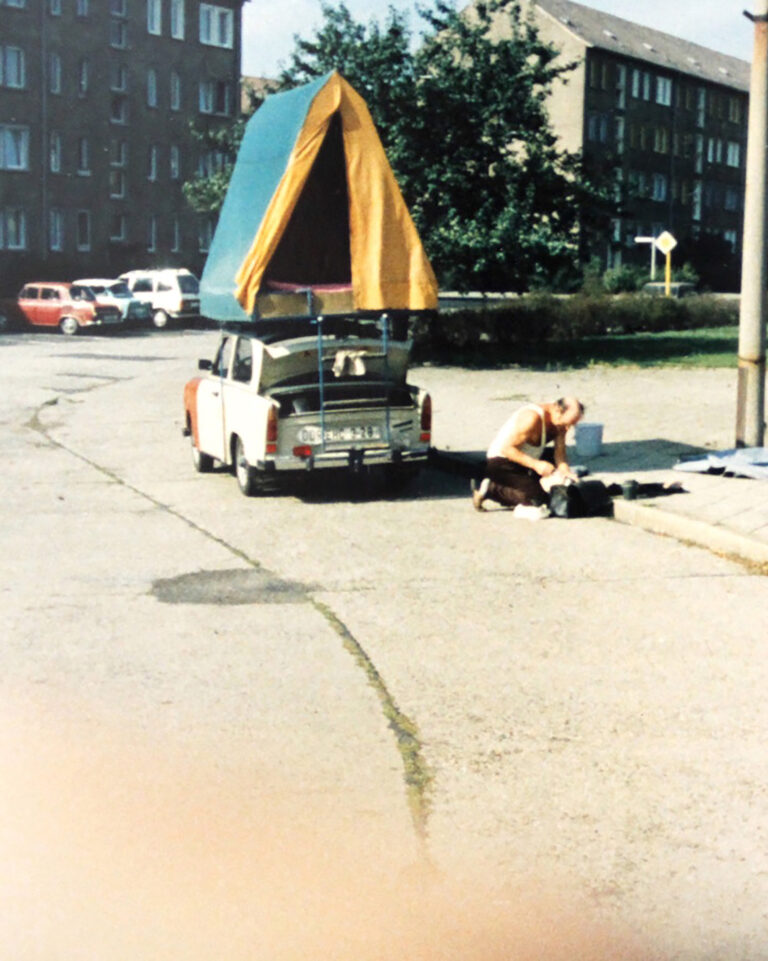This research exhibition stems from the interview project Biographie und Geschichte. Private Fotografie in Ostdeutschland 1980–2000, which has been underway since early 2020. In the more than fifty album discussions carried out until now, album owners have talked about the role private photography played for them before, during, and after the fall of the GDR. There are relatively few private photos of the dramatic events in autumn of 1989. But the albums allow us to impressively trace how, through photography, the communality of families, work brigades, youth cliques, and other groups were produced, organized, and sometimes preserved and stabilized across all ruptures in society. The disappearance of one political system and establishment of a new one is visible, at most, in the details in these albums: people no longer pose proudly next to a Trabant, but instead, next to a Golf. In some holiday albums, the Baltic Sea is replaced by Mallorca; in others, the same tents stand on the same beach year after year. Many photographers also switched from black-and-white to color photography, a move usually made for economic reasons — bringing the films to the new drugstore chains was less expensive than having them developed in local darkrooms.

The exhibition approaches private photographs using various means and from different perspectives. In the lounge of the exhibition hall, selected photo portfolios from our conversation partners are displayed in showcases; On display boards, aspects of private photography in East Germany are discussed using texts, objects, and excerpts from the album talks — How did people get into photography? Who took the photos, and who made the albums? How widespread were darkrooms? And why the photos of television screens with Western television shows? The foundation’s project space offers further opportunities to delve deeper into the theme. In addition to the albums from East German from the years 1980 to 2000, several from West Germany and from earlier time periods are available, allowing comparisons to be made to determine similarities and differences in the private photographs. Further album talks, by appointment, are also possible in this space. Running through both spaces is a ribbon of hundreds of small, individually hung photos taken by a wide range of photographers.
The exhibition “… someone always had a camera …” is organized by the Stiftung Reinbeckhallen Collection for Contemporary Art and supported with means from the Federal Foundation for the Study of the Communist Dictatorship in Eastern Germany. The Deutsche Historische Museum is a cooperation partner in the interview project Biographie und Geschichte. Private Fotografie in Ostdeutschland 1980–2000 and will subsequently include selected photographs and albums in its collection. Dr. Friedrich Tietjen is curating the exhibition in collaboration with Marit Lena Herrmann, Dr. Katja Müller-Helle, and students at the Humboldt-Universität zu Berlin.
Accompanying the exhibition is a glossary (German only), which was created as a student initiative. It can be taken free of charge in the exhibition or downloaded and viewed as a PDF here. The glossary contains 32 contributions that, in view of the large number of private photographs, ask what conclusions can be drawn from the analysis of individual images about private photography as such.
Authors: Ann-Kristin Block, Lena Bösch, Natalia Bürkle, Nadine Butigan, Frank Egger, Marie Egger, Gianna Ehrke, Seoyoung Kim, Katja Müller-Helle, Viviana Linek, Marcel H. Pernik, Véro Seibert, Jana Storch, Friedrich Tietjen, Carolina Zamfirescu







